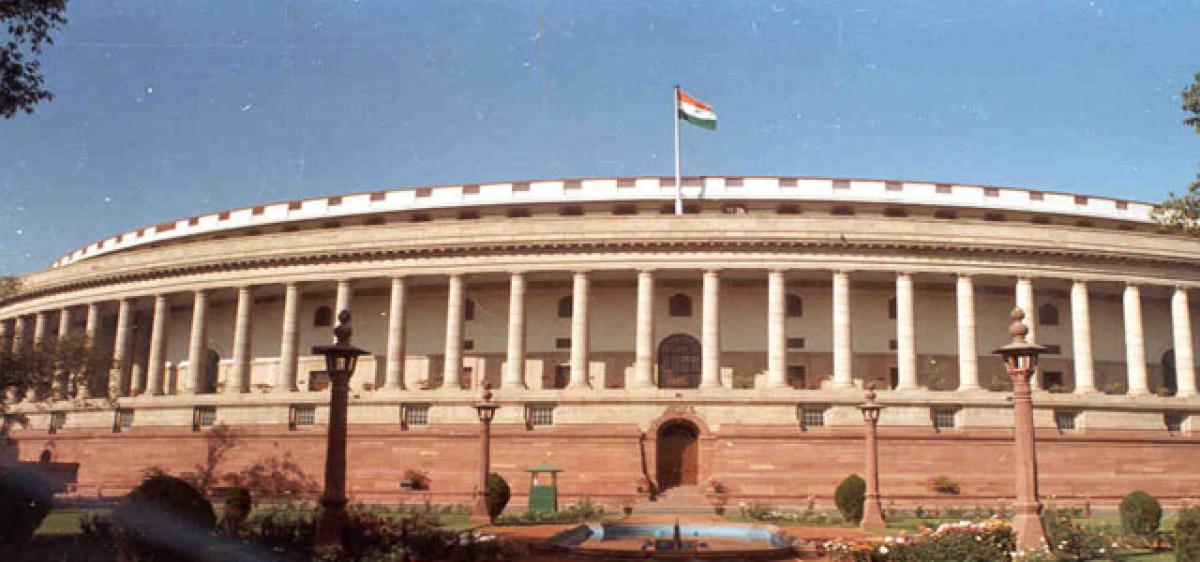Live
- Nara Bhuvaneshwari to File Nomination Papers on Behalf of TDP Chief Chandrababu in Kuppam
- YS Jagan's Memanta Siddham Bus Yatra begins in Rajapuram, to enter Kakinada by evening
- Not just promises, look for capacity to deliver them
- Sujana Chowdary files papers for Vijayawada West
- TDP-BJP-JSP leaders file Lokesh’s nomination
- Hyderabad: Opposition indulging in divisive politics says BJP MP Laxman
- Ajith Kumar shows up to vote 30 minutes before time; Rajini stresses 'dignity in voting'
- Velapalli, Bonda Uma engage in war of words on stone incident
- Accused in stone pelting case arrested
- Watch The Viral Video Of A Woman Wearing Bikini Into Crowded Delhi Bus
Just In

By definition No Confidence Motion or Vote of No Confidence is a statement or vote that a person or persons in a position of responsibility is no longer deemed fit to hold that position: perhaps because they are inadequate in some respect, are failing to carry out obligations, or are making decisions that other members feel are detrimental.
By definition No Confidence Motion or Vote of No Confidence is a statement or vote that a person or persons in a position of responsibility is no longer deemed fit to hold that position: perhaps because they are inadequate in some respect, are failing to carry out obligations, or are making decisions that other members feel are detrimental.
In Parliamentary system No Confidence Motion demonstrates to the head of state that the elected parliament no longer has confidence in the appointed government.
The Constitution does not mention either a confidence motion or a no-confidence motion. Article 75 does specify that the council of ministers shall be collectively responsible to the House of the People.
This implies that the majority of Lok Sabha MPs must not be against the prime minister and his cabinet. In 1991, Narasimha Rao formed a minority government and later scraped together majority support.
Article 118 of the Constitution permits each house of Parliament to make its own rules for conduct of business. Rule 198 of the Lok Sabha specifies the procedure for a motion of no-confidence.
Any member may give a written notice; the speaker shall read the motion of no-confidence in the House and ask all those persons to rise who favour that the motion be taken up.
If there are 50 MPs in favour, the speaker allots a date for discussing the motion. The first NDA government lost such a motion in 1999.
How No Confidence Motion is passed:
In India, a Motion of No Confidence can be introduced only in the Lok Sabha which is the lower house of the Parliament of India.
The motion is admitted for discussion when a minimum of fifty members of the house support the motion.
If the motion carries, the house debates and votes on the motion.
If a majority of the members of the house vote in favour of the motion, the motion is passed and the Government is bound to vacate the office.
Council of Ministers is collectively responsible to Lok Sabha and it remains in office till it enjoys confidence of majority of the members in Lok Sabha. Thus, a motion of no-confidence is moved to remove the council of ministers and thus oust the government from office.
Censure Motion
A censure motion is different from a no-confidence motion. Depending on the constitution of the body concerned, "No Confidence" may lead to compulsory resignation of the council of ministers or other position-holder(s), whereas "Censure" is meant to show disapproval and does not result in the resignation of ministers.
The censure motion can be against an individual minister or a group of ministers, but the no-confidence motion is directed against the entire cabinet.
Again, depending on the applicable rules, censure motions may need to state the reasons for the motion while no-confidence motions may not require reasons to be specified.
It can be moved in Lok Sabha and State Assembly It is moved against individual ministers or members
From inputs from parliamentofindia.nic.in

© 2024 Hyderabad Media House Limited/The Hans India. All rights reserved. Powered by hocalwire.com







